Dear Révolutionnaires, you have voted, and the winner of French Revolution’s July poll is…
cajun/creole cuisine!
 Although I spent a good part of my life growing up in Florida, where you can buy Jambalaya rice for a matter of dimes in the “rice and beans” aisle of the local Publix, I never tasted Louisiana cookin’ until I went up North to college at Princeton. My eating club was renowned for being full of Southerners, for Princeton is touted as the Ivy of the South, and on one illustrious and memorable evening, we held our annual formal “Gatsby Night” to celebrate our most illustrious alumnus: F. Scott Fitzgerald. In the corner I saw a big and boisterous man, black as the night that hung down all around us in the bannistered old courtyard, with a smile bright as the white stars that were just a few of our many lanterns, standing and attempting to spoon chunks of deep-fried something on to the hungry plates of the pearl-and-pin-stripe-clad guests. They fled, so I walked over to him, and asked him what lay beneath the crispy golden coat: “buttermilk-battered, cornmeal-crusted alligator!” he bellowed.
Although I spent a good part of my life growing up in Florida, where you can buy Jambalaya rice for a matter of dimes in the “rice and beans” aisle of the local Publix, I never tasted Louisiana cookin’ until I went up North to college at Princeton. My eating club was renowned for being full of Southerners, for Princeton is touted as the Ivy of the South, and on one illustrious and memorable evening, we held our annual formal “Gatsby Night” to celebrate our most illustrious alumnus: F. Scott Fitzgerald. In the corner I saw a big and boisterous man, black as the night that hung down all around us in the bannistered old courtyard, with a smile bright as the white stars that were just a few of our many lanterns, standing and attempting to spoon chunks of deep-fried something on to the hungry plates of the pearl-and-pin-stripe-clad guests. They fled, so I walked over to him, and asked him what lay beneath the crispy golden coat: “buttermilk-battered, cornmeal-crusted alligator!” he bellowed.
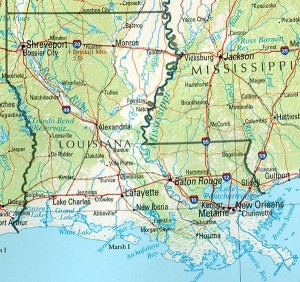 Mon Dieu! “Alligator!” I cried incredulously, “why, I have those in my backyard!” Now this got him excited, because he could see we came from the same place (or rather, from within a few inches of each other on a standard classroom map). Very few things unite those of the Deep South more than the universal hatred of the alligator—on the Florida highway Alligator Alley, it is considered (an illegal) sport to transport any alligator that crosses the road to kingdom come as quickly as possible with a dreaded squash of your tires. “What does it taste like?” I prodded. At this he laughed. “Just like chicken!”
Mon Dieu! “Alligator!” I cried incredulously, “why, I have those in my backyard!” Now this got him excited, because he could see we came from the same place (or rather, from within a few inches of each other on a standard classroom map). Very few things unite those of the Deep South more than the universal hatred of the alligator—on the Florida highway Alligator Alley, it is considered (an illegal) sport to transport any alligator that crosses the road to kingdom come as quickly as possible with a dreaded squash of your tires. “What does it taste like?” I prodded. At this he laughed. “Just like chicken!”
I piled a few alligator fritters onto my plate, breathed deeply, and took a bite. Now, I, in my flapper finest, was the one covered in feathers, but I have to admit, it tasted, vraiment comme le poulet—like a much crisper and moister white meat chicken McNugget.
In fact, chicken McNuggets were my “last meal” before Hurricane Katrina, in Round 1 of her fury, passed over my ocean-side Florida home. Seeing as how I would be eating nothing that didn’t come from a can for at least a few days, I tried to make that drive-through meal on the way to the shelter memorable. And, of course, seeing as how it was Katrina and how McNuggets remind me so terribly much of deep-fried alligator, I never did forget.
And in a way, Creole and Cajun cuisine is a form of living memory. Truth be told Cajun and Creole are two different things; Cajun derives from the word Acadian, describing the refugees who fled New France (Canada) and settled in Louisiana. Creole describes a person of Louisiana descent prior to the Louisiana purchase. However, these days, the two have become so confused and intermarried, that I use them to describe Louisiana cuisine in general. When the Acadians left Canada, they brought their inveterate taste and knowledge of French cuisine to the swamps of the Deep South, where they were forced, as poor, large families, to “make do.” Thus, the mire poix of French cuisine (onions, celery, carrot) became the “Trinity” (onions, celery, bell pepper). Roux was used to cook crawfish and, potentially, the woebegone alligator. The cuisine came to envelop every inhabitant of the region, as Native American sassafras and African okra became staples of the local “French” cuisine.
 So now, as Emeril Lagasse has told us, we have Louisiana to thank for such “kicked up” foodstuffs as fiery andouille sausage and impertinently hot gumbo. If you can believe it, I have never, ever been to New Orleans, a city I’ve wanted to go to all my life. But I am travelling to the Big Easy in the middle of September, and I know precisely where I am going to pay my first visit: Café du Monde, the coffee shop famous for its fluffy, geometric beignets.
So now, as Emeril Lagasse has told us, we have Louisiana to thank for such “kicked up” foodstuffs as fiery andouille sausage and impertinently hot gumbo. If you can believe it, I have never, ever been to New Orleans, a city I’ve wanted to go to all my life. But I am travelling to the Big Easy in the middle of September, and I know precisely where I am going to pay my first visit: Café du Monde, the coffee shop famous for its fluffy, geometric beignets.
Beignets are French doughnuts—could anything be better!? The Acadians brought the recipe down with them, and they became a staple of Louisiana cuisine, a staple so famous that Café du Monde sells its beignet batter online. So for this month’s special poll recipe, I am going to share with you a very French version of this Louisiana classic: Beignets with Lavender Sugar and Apricot Sauce.
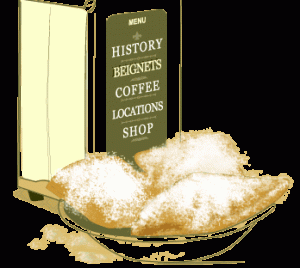 In my family, we take apple slices, dip them in beignet batter, and fry them up for French apple donuts. You could do that, of course, but why bother with fruit when you are being so positively decadent in every other respect? Balls of choux pastry are deep fried until the beignets are crisp and golden on the outside, and creamy and airy on the inside. Then I roll them in sugar studded with lavender blossoms, and dip them in apricot jam, melted down into a hot and smothering sauce. The flavors are big, and the recipe is easy—chapeau to New Orleans.
In my family, we take apple slices, dip them in beignet batter, and fry them up for French apple donuts. You could do that, of course, but why bother with fruit when you are being so positively decadent in every other respect? Balls of choux pastry are deep fried until the beignets are crisp and golden on the outside, and creamy and airy on the inside. Then I roll them in sugar studded with lavender blossoms, and dip them in apricot jam, melted down into a hot and smothering sauce. The flavors are big, and the recipe is easy—chapeau to New Orleans.
It’s time to kick it up a notch, with this throwback to French colonial cuisine. See you later, alligator!
After a while, gumbo filé…
BON APP!
Make sure to vote in this month’s French Revolution poll… Cut It Out: How Do You Like Your French Fries?
At the end of August, I’ll give you a “Revolutionary” recipe based on your answers. Thanks for voting!
- 1 stick of butter
- 2 tablespoons of sugar
- ¼ teaspoon of salt
- 1 cup of water
- 1 cup of flour
- 3 eggs
- ½ cup of apricot jam
- ¼ cup of water
- ¾ cup of white sugar (for dusting)
- 1 teaspoon of dried edible lavender blossoms
Procedure
- The batter for these beignets is choux pastry—the same dough used to make profiteroles and éclairs. Melt the butter over medium-low heat and add the sugar, salt, and water.
- Bring the water to a boil and dissolve the sugar.
- Take the pan off the heat and add the flour. Return the pan to the heat, and stir until the dough comes together.
- Turn the dough out into a bowl and beat with a hand mixer for 30 seconds to cool off the pastry.
- Add the eggs one at a time and beat until the pastry dough comes together.
- Fill a stock pot one third of the way up with vegetable oil. Heat the oil to 325 degrees.
- You want to keep the beignets small because they will puff in the oil, and if you make them too large, the will burn on the outside before they cook on the inside. So you want to make them about the size of ping pong balls. Drop the beignets into the oil, in small batches, and turn them over every so often.
- Pull them out when they are golden and puffed.
- Toss them into a brown paper bag with the lavender and sugar. Shake the beignets around in the bag to coat.
- To make the apricot glaze, melt ½ cup of apricot jam with ¼ cup of water on the stove. Serve alongside the beignets.


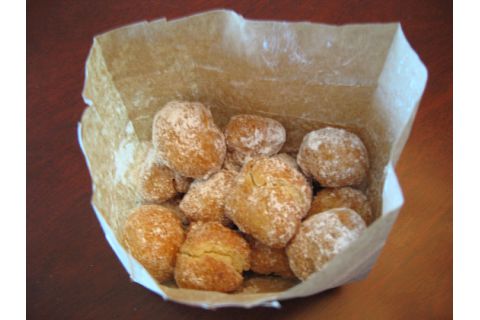
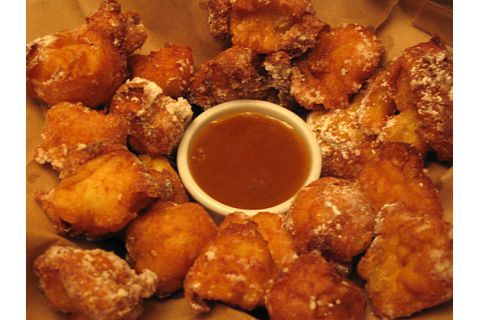
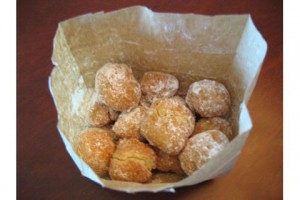


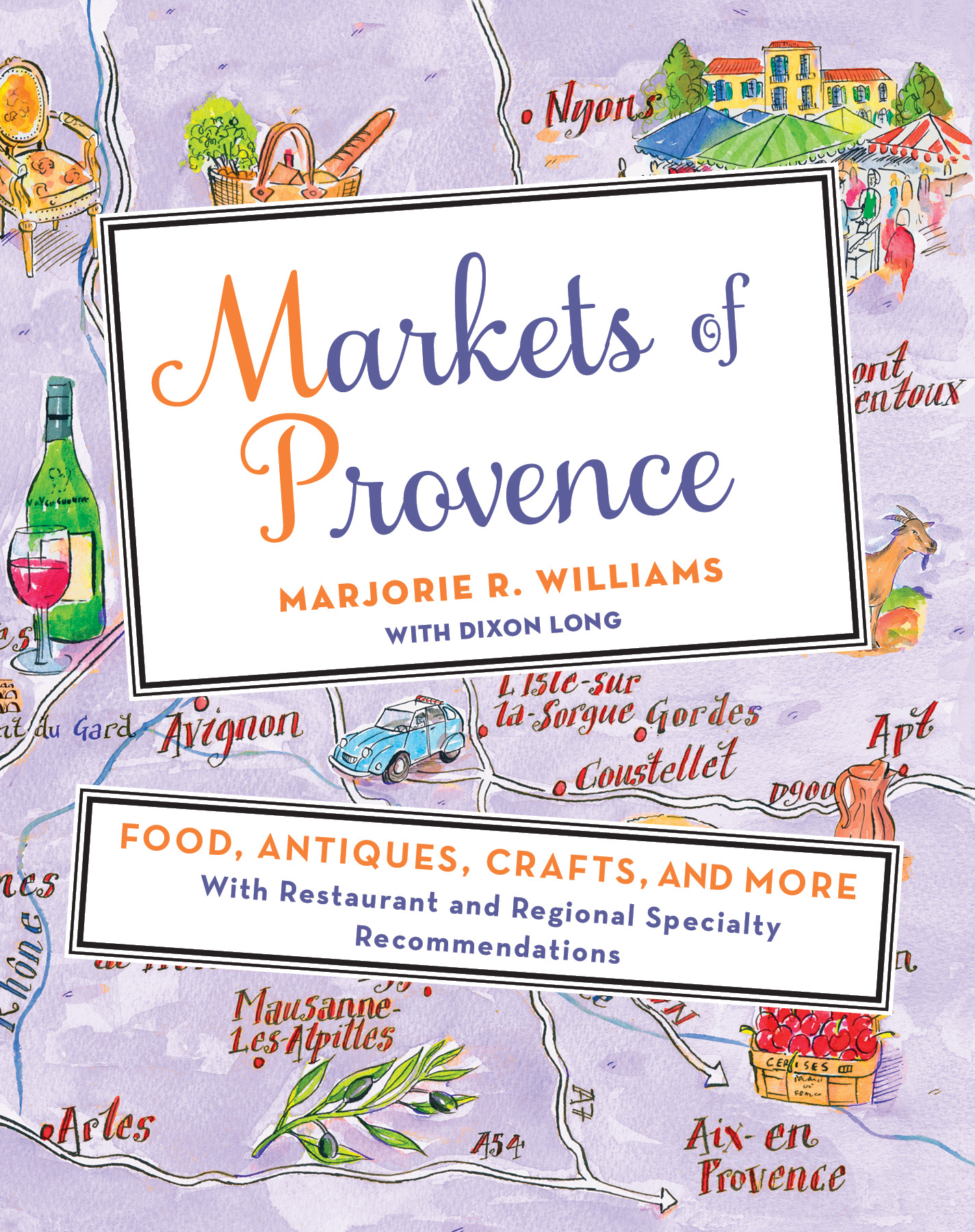

That sounds so wonderful! I'm going to be sure & try & make these. Wow, Lavender Sugar is such a magical idea!